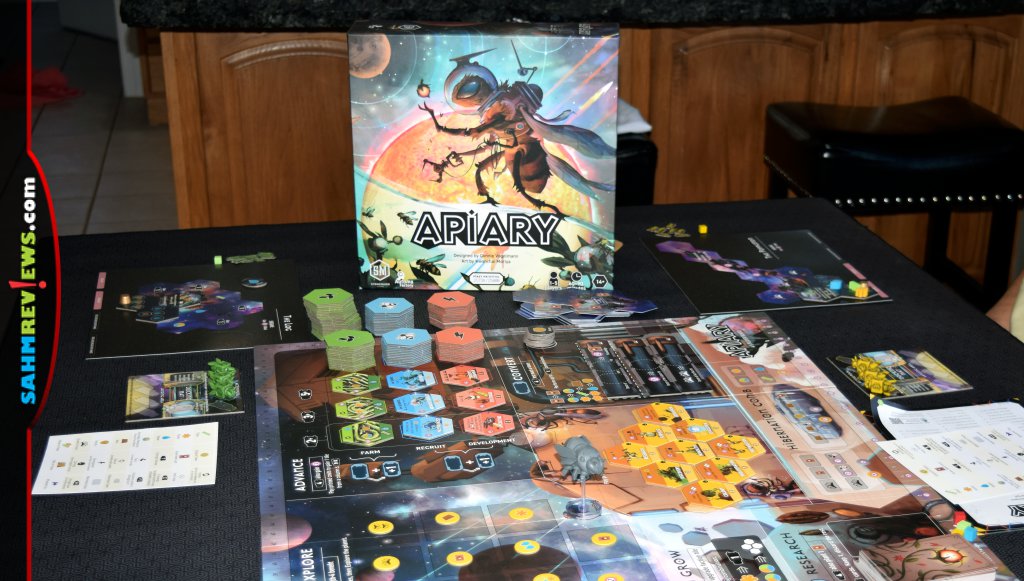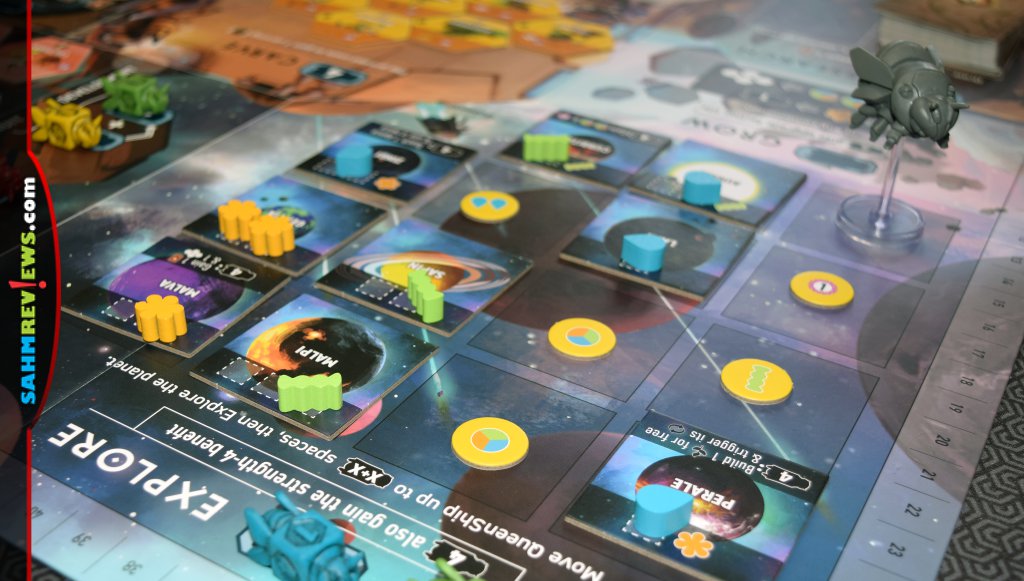Apiary Worker Placement Game Overview

It’s funny the things that trigger old memories. I grew up in the 70’s so shows like M*A*S*H and The Muppet Show left an indelible impression. More than I realized, actually. When I recently heard someone say “Bees in Space“, memories of The Muppet Show skit, “Pigs in Space” instantly came rushing back. I had completely forgotten about it, but those three words drudged it up from the recesses of my childhood brain. (Seriously, my brain is doing the whole Piiiigsss innnn Spaaaccce echo that accompanied the skit. IYKYK.) If you’re wondering why someone would be inspired to talk about bees in space, it’s because that’s the descriptor used for Apiary, a new release from Stonemaier Games.

Normally I like to give details on setup, but it’s a lot so I’m just going to encourage you to check the rulebook. Apiary has a lot going on with a main board, individual player mats and a ton of components and chaos. Place the main board in the center of the table and populate with tiles, tokens and cards. Each player takes docking and hive mats, faction tile, tokens and workers. Plus you need piles for resources and extra tiles. It’s a space hog and you will likely end up expanding your player area so leave room.

In Apiary, you’ll place workers in various sections of the board to explore, collect resources and expand. The workers (bees) look like dice, with the numbers one through four depicted on their sides. Each time a bee returns from work, it ticks up to the next level. What’s unique about this compared to other worker placement games like Lorenzo il Magnifico is that the bees become stronger as they are used. After they reach their max of four, they hibernate, and you need to earn them back.

On your turn, you’ll place an active worker from your docking mat onto one of the many places on the board. There are multiple section, each with a different function. The Explore area is where you collect resources. Each time you go to this area, you direct the QueenShip to move to another space. Reveal a planet (if there isn’t one already there) and gain the related resources.

You have limited space on your player mat. You’ll need to improve your Hive using the Advance section of the board. The Farm, Recruit and Development tiles expand your storage (farms), offer ongoing bonuses/discounts when taking other actions (Recruits) or provide an instant action of some type. Farms also produce income that triggers when you retrieve workers from the board. You’ll also need expand your hive so at some point you’ll need to hit the Grow section of the board.

There are also section of the board for other actions. Go to Convert to make various resource conversions. Spend honey for end game scoring options in the Carve section. Acquire cards from the Research section. You can cash them in for resources or plant them (tuck under your hive mat) for endgame bonuses.

The most advanced actions like Carving can only be accessed by playing the most powerful worker. After that, it goes into hibernation, and you’ll be able to select a bonus from the Hibernation Comb. There are a few different ways to get your bees back from the board or from hibernation. But as with any worker placement game, it isn’t easy – nor is it meant to be. The end of the game is triggered when all the spaces in the Hibernation Comb are filled, or a player places their seventh hibernation token.
There are other facets in Apiary that I haven’t even touched on, but this is just an overview after all. While Apiary may seem complex, it’s not as overwhelming as some games in this genre. Other themes could have worked with this game, but the bee-theme is charming. Even if they are in space. If Apiary sounds like a sweet addition to your game library, ask your local game store about availability. Or you can order online direct from Stonemaier Games or Amazon. Get the latest buzz about Stonemaier Games and their assortment of products by visiting them on Facebook.
Does a compelling theme make a complicated game easier to learn?




